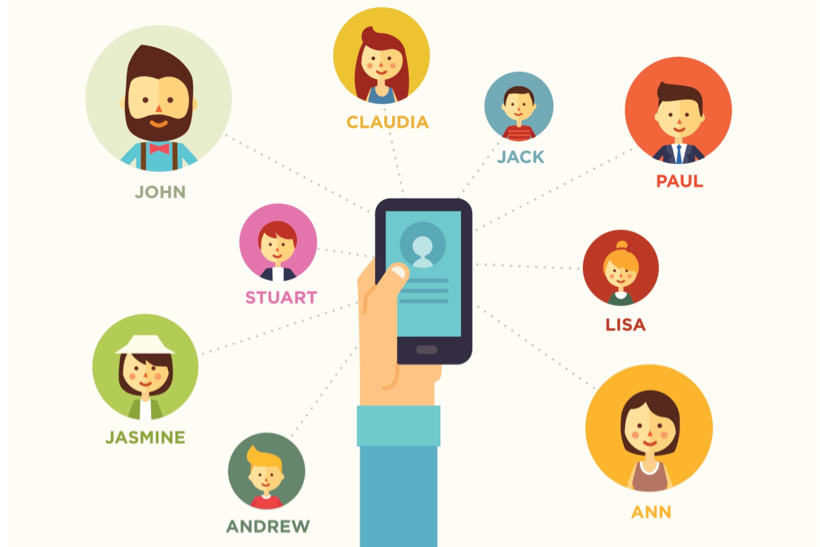 By producing substantive content with original ideas, influencers attract large numbers of loyal followers, and accrue a great deal of authority within a niche or industry. Their posts sway opinions and prompt actions.
By producing substantive content with original ideas, influencers attract large numbers of loyal followers, and accrue a great deal of authority within a niche or industry. Their posts sway opinions and prompt actions.
According to a BuzzSumo study of over 100 million articles, one influencer sharing a post can lead to a 31.8 percent increase in social shares on average. When three influencers shared a piece of content, it doubled the total number of shares; five influencers quadrupled it. In other words, the number of influencers sharing content can have a logarithmic effect on total number of shares; they compound reach and viewership of PR and marketing activities. Corporate communications professionals who develop positive working relationships with key influencers in their industry can achieve media placements with startling results.
Identifying Influencers
How do you find influencers? Marketing experts recommend scouring online communities or using a social media monitoring tool to save time. Beware of identifying influencers simply by their number of followers. Large numbers can be misleading. Some of their followers may not even be real people. A better guide is active and engaged followers – and the number of shares that the influencer’s posts accumulate. Influencers influencing influencers produce the best PR results.
A substantial number of comments on blog posts and social media shares indicate that visitors are reading and enjoying the posts – and that the posts have touched a nerve. Engagement indicates interest. A blog posting with substantial engagement holds more influence than a blog with little engagement but several times more followers. Engagement by other influencers is one hallmark of authority.
Searching hashtags for your topic is one way to identify influencers on social media networks. If you don’t know what hashtags to search for, you can try a hashtag tracker.
On Facebook, you can use the “interests” function to determine how frequently Facebook users post and overall engagement. Facebook’s interest function can provide an overall view of how a specific Facebook user influences others. A social media monitoring tool will save you substantial time by assessing post frequency and engagement across multiple social networks. Along with quantitative assessment, some social media evaluation tools (including CyberAlert) can assess sentiment of the engagement.
In utilizing online databases and tools to identify influencers, it’s important to do your homework to hone in on those influencers who exhibit real authority on the topic and actively engaged followers.
Tips for Connecting with Influencers
Experts in influencer marketing recommend these steps for developing relationships with influencers.
• Strive to build relationships before you need them. That way, reaching out to the influencer will be much easier when you have content you need to amplify.
• Engage them. That means following them on social media platforms, commenting on their articles and sharing their posts.
• Provide the influencer with useful, original content or insights. Ask not how they can help your brand. First, figure out how your brand can help them. In any pitch to an influencer, remember to include the benefits to them, specifics of the content, and timelines. Reminder: Influencers want original ideas and content.
• Thank them. If an influencer includes your idea or content in a post (or if they publish a guest post of yours), send a note of gratitude and or a “shout-out” on social media, to show appreciation.
• Quote, praise and promote them. Praise their ideas and include references and links to their work in your own social media posts. You can ask them for a quote via email or quote one of their previously published articles.
Different Types of Influencers
Jay Baer of Convince & Convert cites eight types of influencers and how they can help brands in a SlideShare presentation.
• The Megaphone amplifies your brand or content.
• The Reporter covers, reviews and reports on events on the ground like a journalist.
• The Face gives an identity to your brand and pieces of content.
• The Connector introduces your brand and content on a social platform.
• The Creative produces content with context that distinguishes your brand from competitors.
• The Designer creates new products, provides ideas, contents, products and services.
• The Neighbor sparks conversations in your online niche and helps establish your brand as an authority through online commenting.
• The Defender protects your company during a crisis.
Understanding the different types of influence and benefits of each will help you identify influencers to contact and develop an effective influencer marketing program. The key is to seek influencers whose qualities and behavior best match your PR and marketing objectives.
Bottom Line: Influencer marketing can be a powerful PR and marketing tool when done correctly. Approaching influencers properly can produce enormous marketing and PR benefits.
Other Articles
Who are Social Media Influencers and How to Find Them?
Digital Success Agency
How to Get Your Content Amplified by Influencers
Marketing Land
6 Clever Ways to Get Influencers to Link to You
QuickSprout
Why Influencers Ignore Your Pitch — and What You Can Do About It
iMedia Connection
William J. Comcowich founded and served as CEO of CyberAlert LLC, the predecessor of Glean.info. He is currently serving as Interim CEO and member of the Board of Directors. Glean.info provides customized media monitoring, media measurement and analytics solutions across all types of traditional and social media.




